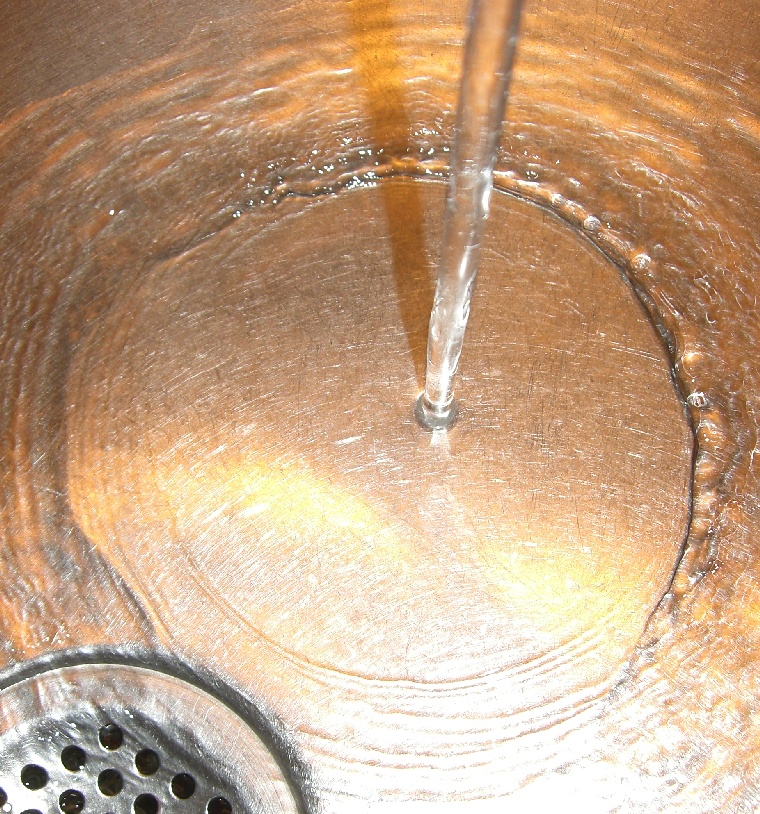Septic systems use natural processes to treat gray water and sewage, making household wastewater clean enough to be returned to the environment.
A septic system is like a small sewage treatment plant attached to a building, typically a private dwelling. The sewage system receives all the dirty water from the building – everything that goes down the drain or is flushed down the toilet – removes all the solids from the water, cleanses it of disease-causing organisms, filters it, and returns it to the local environment.
Nature has a system for cleaning water and removing solids and bacteria. For example, water flowing through bogs and marshes is rendered clean through filtration and the activities of plants, microscopic organisms, and other species. Septic systems are the same: they take advantage of the natural activities of microbial species, and the filtering capacity of the soil, to cleanse wastewater.
Septic System Design
In typical septic systems, wastewater leaving the home is deposited in the septic tank, a holding tank where solids settle out and form a layer of thick sludge on the bottom of the tank. Some substances in wastewater float and these accumulate at the top of the septic tank in what is commonly referred to as the scum layer. Between the scum and the sludge, there is a layer of relatively clean water – the clear zone.
In the septic tank, anaerobic bacteria (bacteria that grow in the absence of oxygen) begin the process of breaking down organic material and removing potentially harmful organisms from the water. Any gas produced escapes through a ventilation pipe.

The Septic System Drain Field
While sludge and scum are trapped in the septic tank, water from the clear zone can move along into the septic field (or drain field). The drain field is built with perforated pipe laid down on porous material that allows water to percolate through.
Water flowing through the pipes escapes into the porous material and either evaporates or filters down through the soil. In the process, aerobic bacteria help to remove any remaining organic material and harmful organisms. By the time the water returns to a body of water or watercourse in the environment, it is clean.
There are different septic system designs to address a variety of different circumstances. When the conditions are difficult, a septic system can be designed by an engineer to meet wastewater treatment requirements.
Read Also:
Septic System Maintenance
Good care of a septic tank and drain field involves controlling what goes down the drain, care of system components, and regular inspection and pumping.
A septic tank and drain field make up a private sewage treatment system. These systems require conscious care and maintenance to keep them working and avoid costly repairs or contamination of the environment.

Everyday Maintenance of Septic Systems
Nova Scotia Environment writes that “a well-maintained septic system can run for decades. An abused or neglected one can fail tomorrow” (“Before You Construct an On-site Sewage System,” 2008). When you live in a home with a septic tank and field, you need to observe certain lifestyle rules:
- Conserve water. Too much water moving through the septic system is a frequent cause of problems.
- Use cleaning products in moderation; use biodegradable products where possible.
- Don’t do multiple loads of laundry in one day.
- Use a lint filter in the washer.
- Don’t put food waste or cooking oil down the drain; compost kitchen waste.
- Don’t flush plastics or other non-biodegradable items.
- Don’t put chemicals such as paint, pesticides, automotive oil, disinfectants etc. down the drain.
- Divert surface water away from the field.
- Keep a healthy grass cover growing over the tank and field. (Don’t build or pave above it.)
- Don’t allow trees or tree roots to grow into the septic field.
- And don’t drive over the septic field.
The Canada Mortgage and Housing Corporation does not recommend the use of additives marketed as septic system enhancers (“Your Septic System“).
Regular Maintenance
Even when a septic system is carefully maintained on an ongoing basis, it will still need to be checked and emptied periodically:
- Have the tank inspected every year or every second year, depending on how much it’s used.
- Most tanks need to be pumped out about every three years.
Nova Scotia Environment recommends summer and early fall as the best times to have a tank pumped out. If the tank belongs to a property that’s only occupied in the summer, pumping should be done early in the season to avoid frost damage.
If your septic system fails, the cost to repair or replace it will be significant.
Signs of Septic System Failure
If a septic system is not working properly, you should be able to tell. Household plumbing fixtures that are slow to drain may indicate clogged pipes or a problem with the septic tank or field. You may also notice sewage or grey water backing up into the house or liquid pooling over the septic field. Other signs of problems include an odor of sewage, and contaminated wells or surface waters.
Always hire a professional contractor to pump or repair a septic tank. In many places, septic tank failure and/or alterations to the system must be reported to environmental authorities and approved.
Sources
- Canada Mortgage and Housing Corporation. “Your Septic System.”
- Florida Department of Health in Columbia. “Septic System Information and Care” Accessed October 29, 2018










